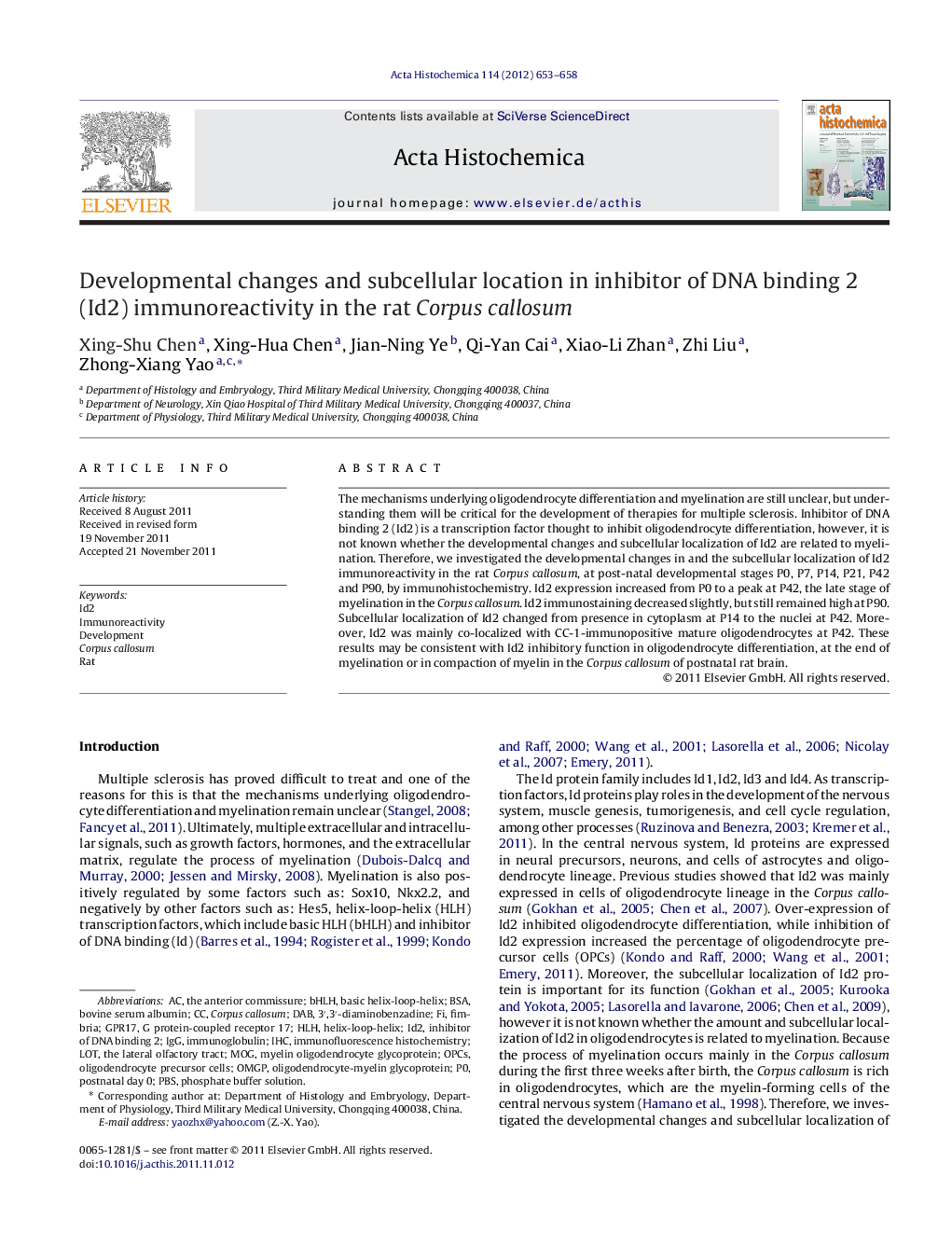| Article ID | Journal | Published Year | Pages | File Type |
|---|---|---|---|---|
| 1923782 | Acta Histochemica | 2012 | 6 Pages |
Abstract
The mechanisms underlying oligodendrocyte differentiation and myelination are still unclear, but understanding them will be critical for the development of therapies for multiple sclerosis. Inhibitor of DNA binding 2 (Id2) is a transcription factor thought to inhibit oligodendrocyte differentiation, however, it is not known whether the developmental changes and subcellular localization of Id2 are related to myelination. Therefore, we investigated the developmental changes in and the subcellular localization of Id2 immunoreactivity in the rat Corpus callosum, at post-natal developmental stages P0, P7, P14, P21, P42 and P90, by immunohistochemistry. Id2 expression increased from P0 to a peak at P42, the late stage of myelination in the Corpus callosum. Id2 immunostaining decreased slightly, but still remained high at P90. Subcellular localization of Id2 changed from presence in cytoplasm at P14 to the nuclei at P42. Moreover, Id2 was mainly co-localized with CC-1-immunopositive mature oligodendrocytes at P42. These results may be consistent with Id2 inhibitory function in oligodendrocyte differentiation, at the end of myelination or in compaction of myelin in the Corpus callosum of postnatal rat brain.
Keywords
Corpus callosumbHLHGPR17OMgpId2HLHInhibitor of DNA binding 2MOGIgGPBSDABoligodendrocyte-myelin glycoproteinBSAOPCsbovine serum albuminbasic helix-loop-helixImmunoreactivityIHCimmunoglobulin Developmentpostnatal day 0Oligodendrocyte precursor cellshelix-loop-helixFimbriaLotphosphate buffer solutionRatimmunofluorescence histochemistrymyelin oligodendrocyte glycoprotein
Related Topics
Life Sciences
Biochemistry, Genetics and Molecular Biology
Biochemistry
Authors
Xing-Shu Chen, Xing-Hua Chen, Jian-Ning Ye, Qi-Yan Cai, Xiao-Li Zhan, Zhi Liu, Zhong-Xiang Yao,
